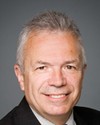Good morning.
Mr. Chairman, members of the committee, it gives me great pleasure to be with you this morning along with Chief Warrant Officer Gino Moretti, Sergeant-Major of the Canadian army. I would also like to thank General Natynczyk, the Chief of the Defence Staff, for giving me the opportunity to—in fact, my first opportunity—to talk to you about a subject that is very dear to my heart, as commander of the Canadian army, the readiness of our troops.
The Canadian army maintains a presence in over 250 Canadian communities. Close to 4,700 Canadian Rangers are on patrol in the North. Some 44,000 service personnel, of whom 50% are reservists, are integrated into the larger Canadian community. And roughly 5,700 civilian employees serve on the Canadian army team. These men and women are grouped into ten reserve brigades and three regular force brigades, and can also be found on bases and in schools and headquarters. Each one of these individuals helps ensure the operational readiness of the army, as well as contributing actively to the army's force generation effort; in addition, 35% of the army's strength is integrated into other commands and services.
Canada's military keeps watch on potential instabilities around the world that could require advice or rapid response on behalf of the government, but it never knows where its people or assets may be deployed or the nature or type of mission required. As a result, the primary duty of the army, as well as the entire military institutional structure, is to stand ready with a capacity to respond to any challenge in any part of the world where it might be ordered to go.
The army is a different army than it was 10 years ago. In the decade following the attacks on the World Trade Center, the entire world security situation has changed dramatically, and we have been compelled to keep up with it. The Canadian army must be nimble, highly trained, and immediately responsive to a menu of new and unanticipated challenges. It must be trained, equipped, and funded to operate in numerous theatres, often simultaneously: from snow in the Arctic to jungles in Africa, from a potential train derailment and evacuation in Port Hope to flooding on the Red River. It must be flexible enough that it can get fresh water using the disaster assistance response team, DART, to a tsunami-affected area in the South Pacific while at the same time delivering relief efforts to Haiti.
These tasks are not mutually exclusive but rather parts of a Canadian Forces skill and asset matrix for domestic and international deployment that changes as the situation and government priorities deem necessary.
Your current undertaking of conducting an in-depth study of readiness is timely to ensure that the Canadian Forces deliver on the six core missions enunciated within the Canada First defence strategy. I understand that the committee has received copies of the Canada First defence strategy, which includes an outline of the six core missions of the Canadian Forces.
With these missions in mind, I would say that we really have two major vistas that we must take into account on our watch.
At home, domestic and community responsiveness is where the CF stands ready to provide disaster relief in Canadian communities and search and rescue services for Canadians; patrol our land, maritime, and air space; protect our ocean trade routes; enforce sovereignty in our north; fight the war on terrorism; help defend Canada's computer networks; and assist with security at international events hosted by Canada.
And away, international and allied responsiveness is where the CF stands ready to provide disaster relief in other countries; participate in peacekeeping operations like those ongoing in the Middle East; field a specifically trained combat-ready armed force; provide the capabilities to enforce United Nations Security Council resolutions; work with our allies in NATO operations; participate in peace-building operations, which might require some armed intervention in world trouble spots; and contribute to international peace and security through missions like counter-piracy efforts off the coast of Africa.
Before commenting on readiness, I would like to emphasize a few central points about your army. We are centred on a soldier, a soldier who today possesses a warrior spirit—the confidence and skill that comes from fighting and is reinforced by respect from Canadians. Our soldiers live in units that provide them with core skills, assurance, and esprit de corps.The army equips the soldier, and our equipment programs, such as future land combat vehicles, deliver an important capability to Canada.
We operate in combined arms teams where we synchronize the complementary skills of these great Canadians and their gear to deliver effect on the battlefield. Also, I use the phrase that “Canada's army is the force of decisive action”, as there is nothing more decisive than committing boots on the ground.
Readiness, as you know, Mr. Chair, was defined by the CDS as the ability to get the right people with the right skill sets and the right equipment into the right place at the right time. It is a measure of the ability of an element of the Canadian Forces, in my case elements of the army, to undertake an approved task.
I'd like to refer you to my two handouts, “Army Field Force” and “Army Training Readiness”. One of the fundamentals of maintaining a combat-capable Canadian army resides in its institution. Field forces would not only be in jeopardy; they would not exist without the institution.
To depict the importance, I'd like to use a triangle. At the base we find the institution composed of 17 schools and training centres, like the Combat Training Centre in Gagetown, the Canadian Manoeuvre Training Centre in Wainwright, our 11 army bases, and various headquarters that all provide the leadership, the foundation training, and the support we need to prepare our troops and combined arms units being sent out to help Canadians at home or defend our values abroad.
At the middle of the triangle you find our units that form the field force working through a series of annual individual battle-task standards, individual skill sets, or new competencies such as learning to use new equipment, and participating in collective training events and exercises. This provides a field force with normal readiness and includes army formations and units, immediate response units, Arctic response company groups, and territorial battalion groups. These are army units ready to deploy to fight forest fires or assist with ice storms and floods.
For example, after Hurricane Igor hit eastern Newfoundland, it took only a few hours to have reserve and regular force army personnel there. This operation was supported by the institution, in this case the army base in Gagetown, New Brunswick, which maintained the 24-7 operations to sustain the deployed troops, and the Joint Task Force Atlantic headquarters, which provided essential command and control over the mission and linkage with the whole-of-government partners. A thousand people in uniform, mostly army, were helping fellow Canadians in dire need within 12 hours from the provincial request for assistance.
From the section to brigade or task force level, high readiness is acquired through rigorous training to a collective battle-task standard prior to being declared operationally ready. This results in an army highly capable of conducting decisive actions in carrying out missions across a broad spectrum of employment as a joint force and integrating the enablers from our sister services. Not all army units will reach the highest degree of operational readiness, only those that have been identified for a task or mission such as a rotation in Afghanistan or somewhere else where the Canadian government commits forces, such as the disaster assistance response team in Haiti, or the non-combatant extraction operation in Lebanon. These units or formations are at the apex of the triangle.
The army manages readiness through a 24-month cycle that we call a managed readiness plan. In this plan, units or formations that have been tasked or assigned for various missions--some ongoing, others as contingencies or commitments to NATO, all within the guidelines of the Canada First defence strategy six core missions--are trained and readied.
On a parallel, what we are currently doing in Afghanistan is helping the Afghan National Army build that triangle. We are helping them to build their institution, train their field force, and prepare those Afghan units for a higher state of readiness, ready to fight for their country.
In conclusion, I would tell you this.
The first priority of a robust and well-equipped Canadian Forces is to protect Canadians and defend Canadian sovereignty at home and abroad. To do this we need the right institutional support to get the job done. The centrepiece of any successful future army capability is the soldier, possessing a warrior spirit and supported with modern, effective tools and equipment.
Mr. Chair, let me thank you for this great opportunity to contribute to this committee's study on readiness. Mr. Moretti and I stand proud to represent our soldiers who serve this country so well.
I'd like to just provide Mr. Moretti the opportunity to say a couple of words. Mr. Moretti is my command team partner, a master gunner with over 35 years of experience. I am honoured to be standing next to Mr. Moretti every single day, particularly when we are surrounded by great Canadian soldiers.












